Warren Street is probably better known by the underground station of the same name, at the junction of Tottenham Court Road and Euston Road.
Warren Street runs parallel to Euston Road between Tottenham Court Road and Cleveland Street and my reason for being in Warren Street was to track down the location of one of my father’s 1980s corner shop photographs.
This is the corner shop of J. Evans, Dairy Farmer on the corner of Warren Street and Conway Street, photographed in 1986.
The same location, 33 years later in 2019, now occupied by The Old Dairy coffee shop.
The shop front and the railings are Grade II listed. The listing states that the building was constructed around 1793 with the shop front dating from 1916. I suspect that J. Evans was one of the Welsh dairy farmers who set up shop in London. The inside of these corner shops are very similar, shelves packed high with tinned and packet goods.
An enlargement of the view through the door shows a wonderful tiled picture of a field and cows, part of a set of scales can be seen to the right and the shop assistant is behind the counter.
This was only 33 years ago, but this type of local shopping is now dominated by the big supermarket brands, and a small store like this could probably not afford the rent or business rates.
The tiled picture of fields and cows could have been the scene where Warren Street is located back in 1746. At the time when John Rocque complied his map of London, the city had not yet reached as far as Warren Street and the area was still mainly fields, with some limited building just north of the future junction of Tottenham Court Road and Euston Road. In the following extract from Rocque’s map, Tottenham Court Road is on the right. I have marked the approximate location of Warren Street with red lines, running across the full width of a field.
One hundred years later, and all the fields of Rocque’s map would be buried under a significant northward expansion of the city. The following map extract from Reynolds’s 1847 map (now I have the map out the shoe-box for last week’s post, I will use it more) shows Warren Street just above the centre of the map, with building covering the entire area (apart from the corner of Regent’s Park shown top left).
Warren Street was built between 1790 and 1791. The street is named after the daughter of Sir Peter Warren, Anne Warren the wife of Charles Fitzroy, the 1st Baron Southampton who was the owner and developer of the land on which Warren Street was built.
Warren Street is relatively quiet, a mix of architecture, but retaining many original buildings.
The street runs parallel and a short distance to the south of the busy Euston Road. Standing in Conway Street and looking across Warren Street, Euston Road can be seen, along with the new office buildings of the Regent’s Place development.
Looking south down Conway Street from Warren Street and a mainly original street plan and buildings survive.
In the above photo, the J. Evans corner shop can be seen on the right. Note the lighter bricks on the second and third floors. The difference in bricks is due to a mid 20th century re-build of the top two floors.
The London Metropolitan Archive, Collage site has a couple of photos of J. Evans shop. The following photo dates from 1978.
Image credit: London Metropolitan Archives, City of London: catalogue ref: SC_PHL_01_337_78_689.
A couple of large adverts are on the Warren Street facing wall. Also note that just along Warren Street were some other shops. Difficult to see exactly what they are selling, but they look to be typical of the shops serving the day to day needs of local residents that were once found all across London. Today, these shops have been converted to a couple of private clinics.
The buildings in which these other shops were located have what appears to be a secret entrance to a different place – this is the entrance to Warren Mews.
Warren Mews is a short street, even quieter than Warren Street, although I dread to think how much the houses that line the mews cost.
After having found the old shop frount, I walked back down Warren Street towards Tottenham Court Road, viewing an interesting series of buildings as I walked.
The Smugglers Tavern:
I do get depressed when walking the streets of London looking at the loss of one off shops, specialist shops and businesses, however in Warren Street I found a survivor. This is the London premises of Tiranti – a UK manufacturer and supplier of Sculptors equipment.
The business was founded in High Holborn by Giovanni Tiranti in 1895. The business relocated to a number of different locations over the years, and whilst the main business is now located in Thatcham, Berkshire, Tiranti still retain a London premises.
The shop window of Tiranti in Warren Street:
Tiranti has a fascinating history. Their web site can be found here, and contains an “About” page with a history of the business and their moves across London.
Although Tiranti has survived, another specialist business in Warren Street recently closed.
At the junction of Warren Street and Fitzroy Street is a large corner store, currently occupied by the Loft furniture business as their London showroom.
Until early 2017, this was the building occupied by French’s Theatre Bookshop:
The French’s business was established in London around 1830. The bookshop occupied several locations across London and moved to the Warren Street / Fitzroy Street location in 1983, so whilst not a long term occupier of the site, it was good to find a specialist business serving the acting community of London and further afield.
After closure, French’s went fully online, but has now reopened a bookshop at the Royal Court Theatre.
A few years ago I photographed the original entrance sign for Samuel French. It is remarkable how quickly places change.
The LMA Collage site identifies the same corner shop, now occupied by Loft, previously by French’s Theatre Bookshop, was in 1972 occupied by a second-hand car business.
Image credit: London Metropolitan Archives, City of London: catalogue ref: SC_PHL_01_340_72_1023.
Used car dealing was a specialty of Warren Street for much of the first half of the 20th century with car dealers occupying many of the buildings and also second-hand cars for sale lining the street. The business on the corner with Fitzroy Street must have been one of the last in operation on the street.
The car dealing business in Warren Street attracted a number of dubious characters, one of whom was Stanley Setty, a car dealer who operated outside a cafe on the corner of Warren Street and Fitzroy Street (on the opposite side to the above photo) . Setty dealt in cash only and was always in possession of large amounts of cash.
He had an associate in Brian Donald Hume who dealt in black market goods. In 1949, after an argument and a fight, Setty was murdered by Hume, who disposed of his body parts over the Essex Coast from a hired plane.
The Daily Herald on the 24th October 1949 included a graphical report of the murder (©British Newspaper Archive)
Hume was found not guilty of the murder, only the lesser offence of being an accessory to the murder by disposing of the body. After his release from prison he was happy to report to the press that he had carried out the murder – the defence of double-jeopardy protecting him from a new trial.
Warren Street is a very different street today.
On the Fitzroy Street side of the Loft / French’s Theatre Bookshop building is a blue plaque which has an interesting connection to recent excavations.
Captain Matthew Flinders was instrumental in identifying Australia as a continent, by being the first western explorer to circumnavigate the land, which he would also play a part in naming.
His name was all over the media earlier this year when his grave was discovered during the excavations of St James’s burial ground as part of the HS2 extension to Euston Station, a short distance along the Euston Road from Warren Street.
Captain Matthew Flinders (source here).
Warren Street has some interesting shop fronts:
Original terrace of houses, shops on the ground floor, offices and / or flats above. Work on the buildings over the years shown by the different brick colours.
At the junction of Warren Street and Tottenham Court Road is the underground station that bears the street’s name.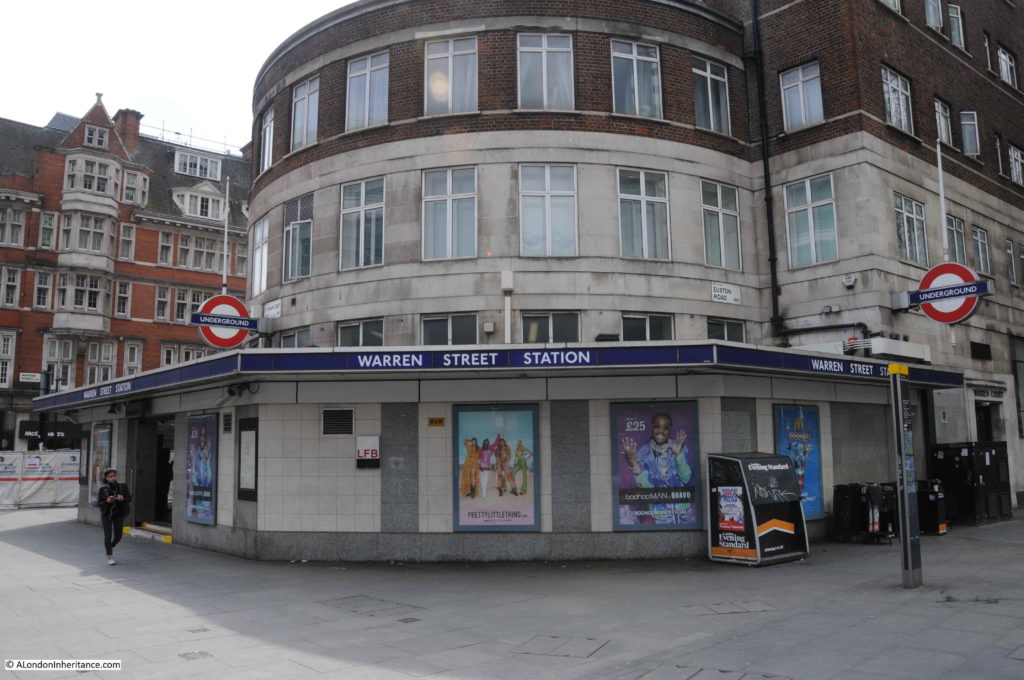
The first underground station opened here in 1907, with the current building dating from 1934.
The station is on the Northern and Victoria lines, and is a very busy station during week days.
Large numbers of people use the station for the offices at Regent’s Place, University College Hospital, University College London, and the businesses that line Tottenham Court Road and the surrounding streets. It is a station I have used many times and during the early morning peak hours the automatic ticket gates are usually left open to speed passengers through from the escalators to the street.
Since being a field on the northern edge of John Rocque’s London, Warren Street has been home to some lovely late 18th century buildings, the discoverer of Australia as a continent, the arrival of the underground, used car dealers, and J. Evans – Dairy Farmer, the shop that was the reason for my walk along Warren Street.

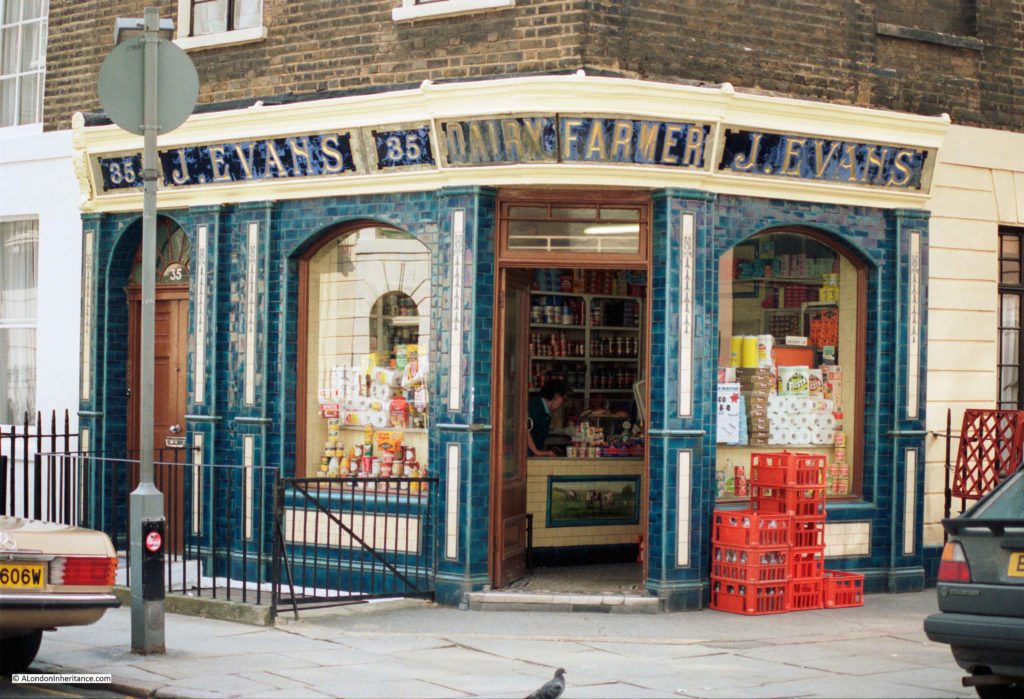
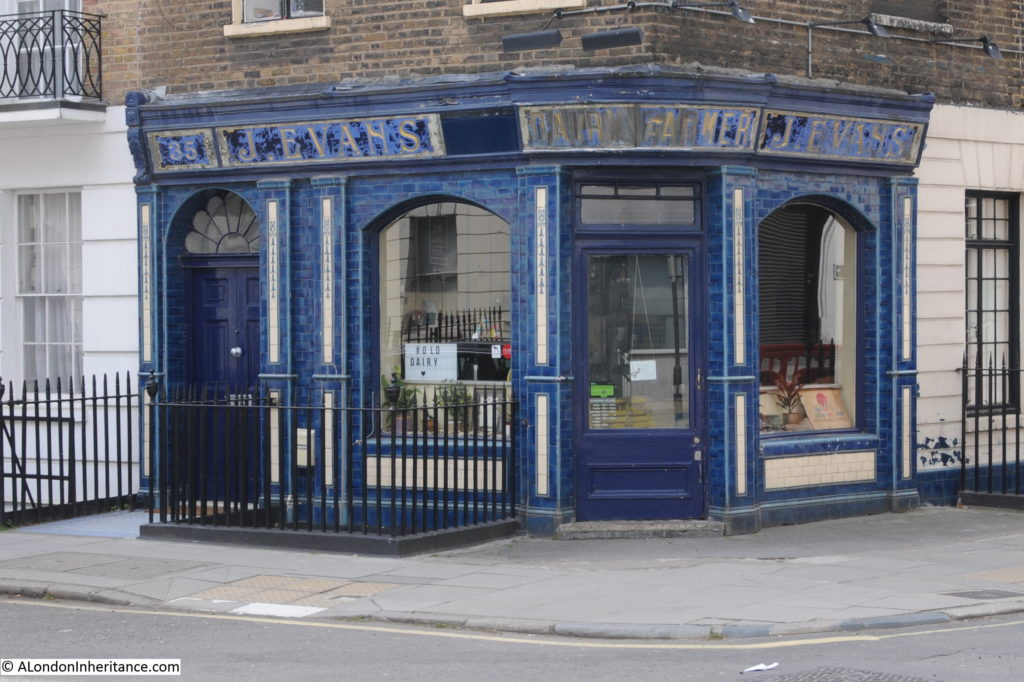


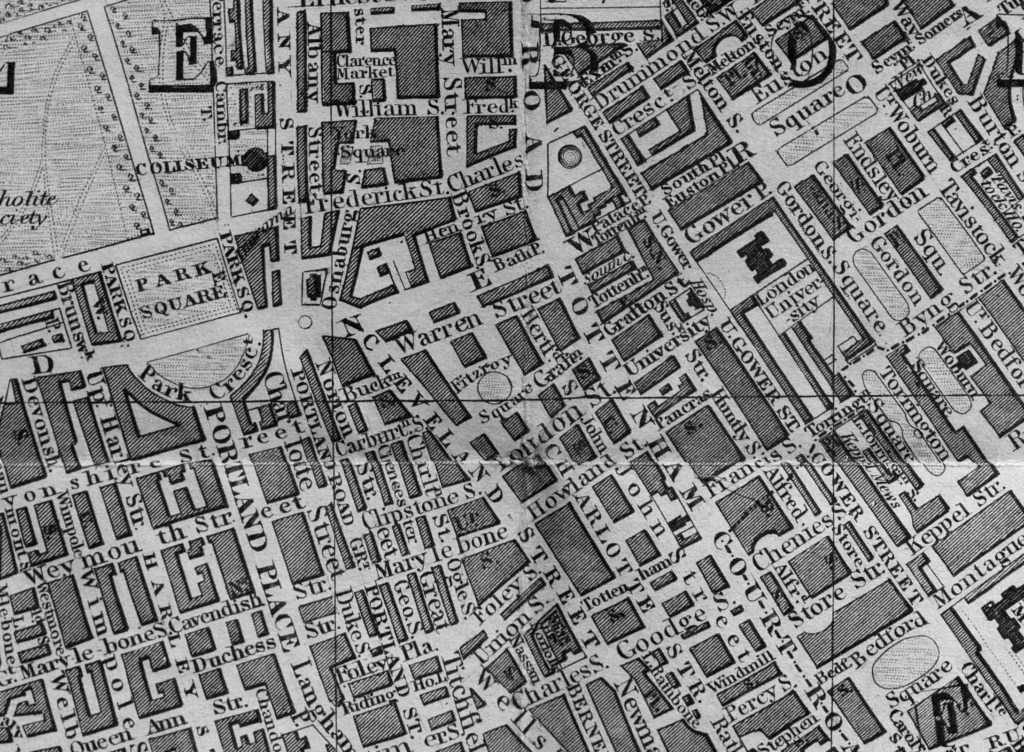
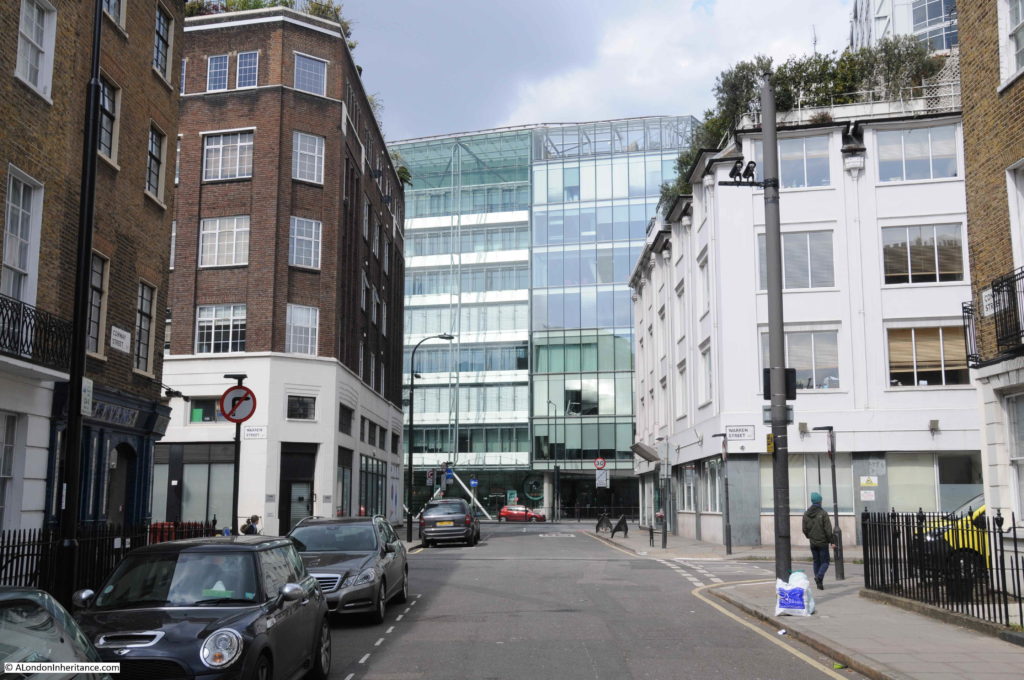


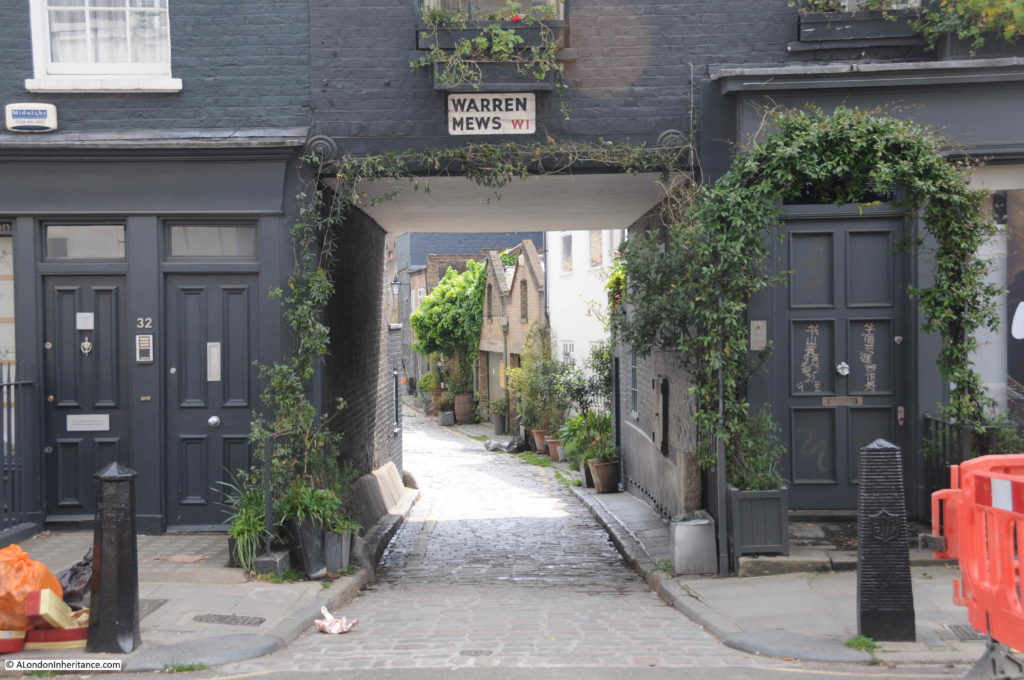

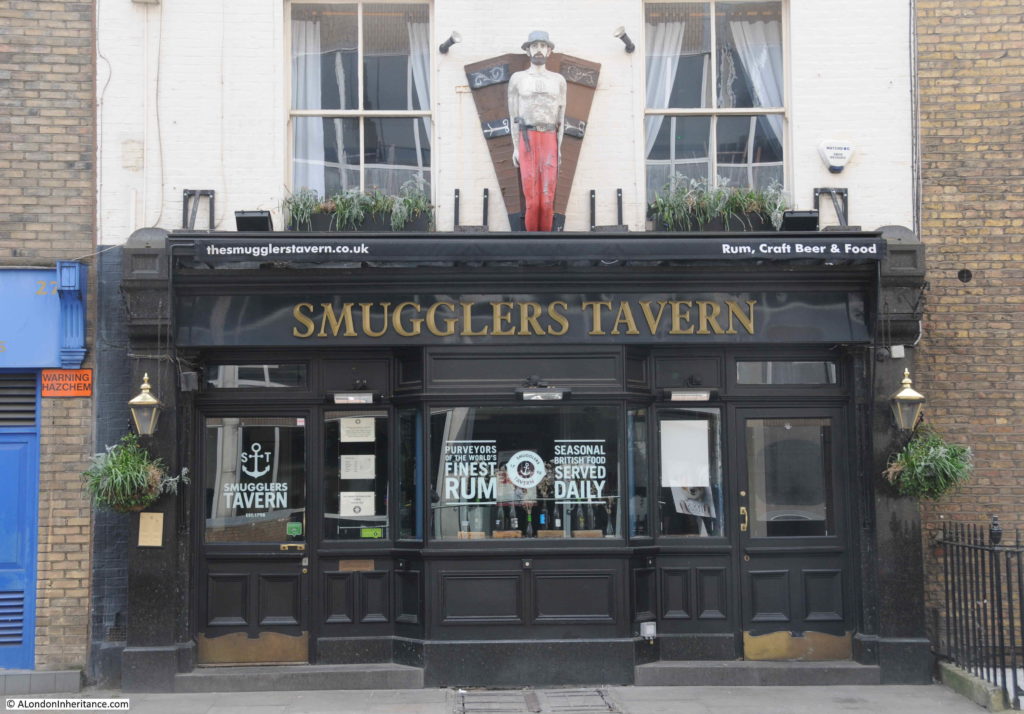
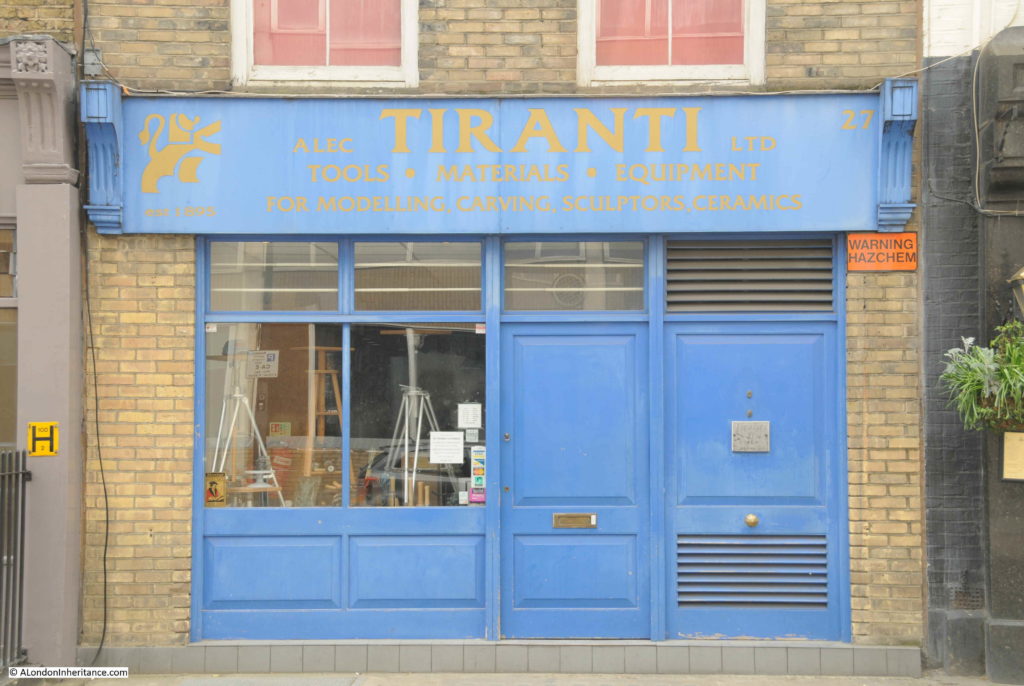
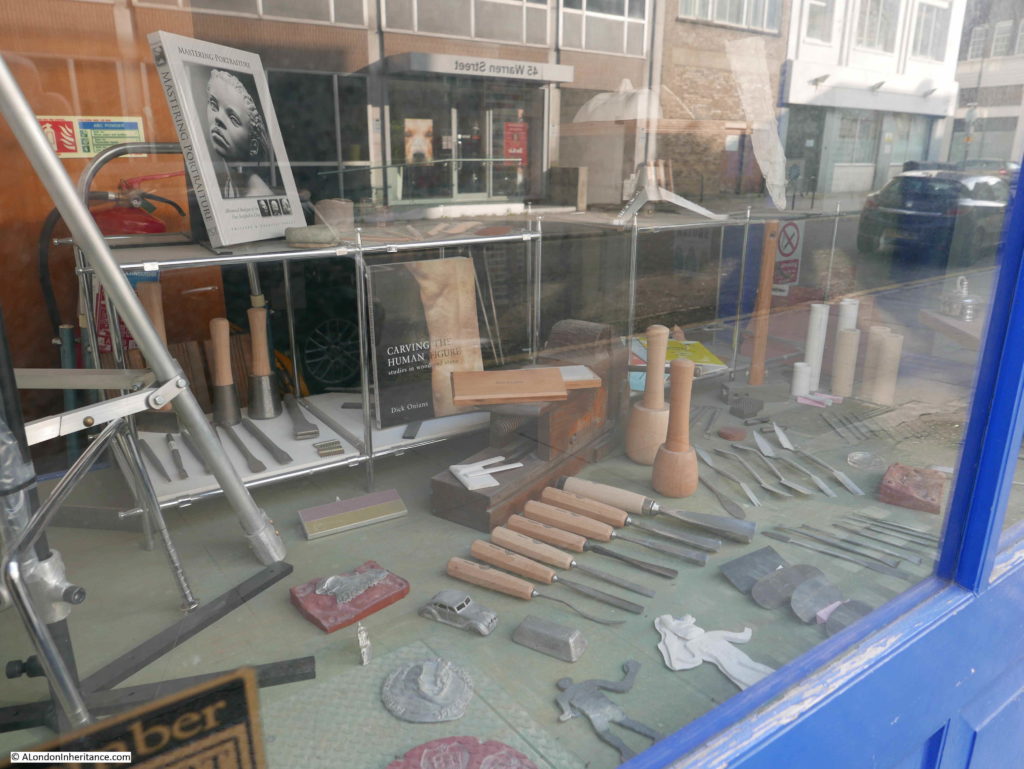
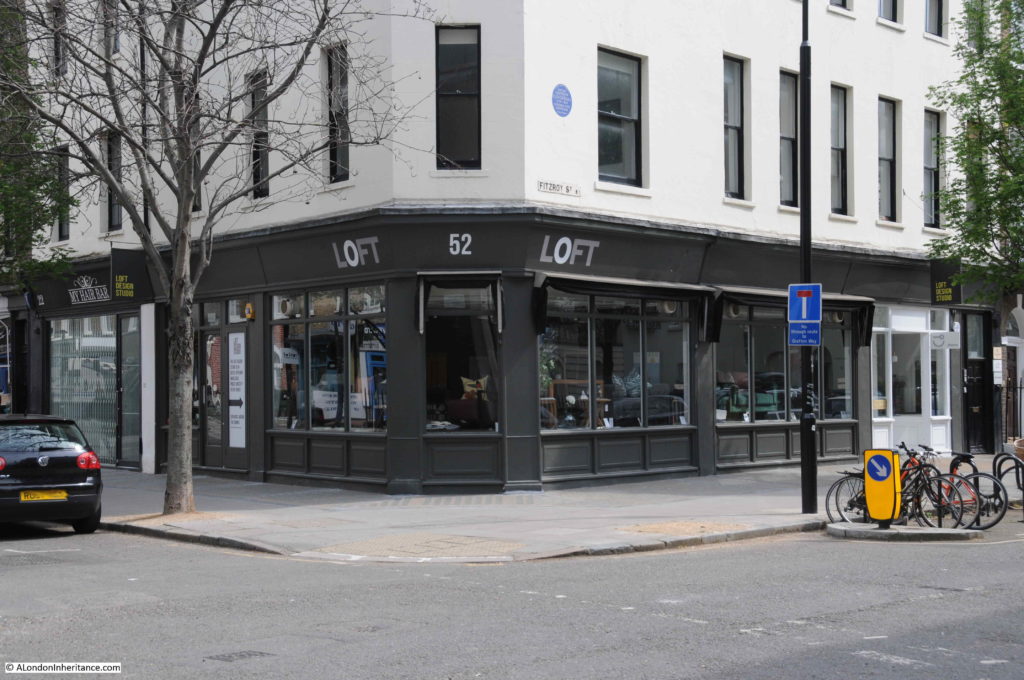

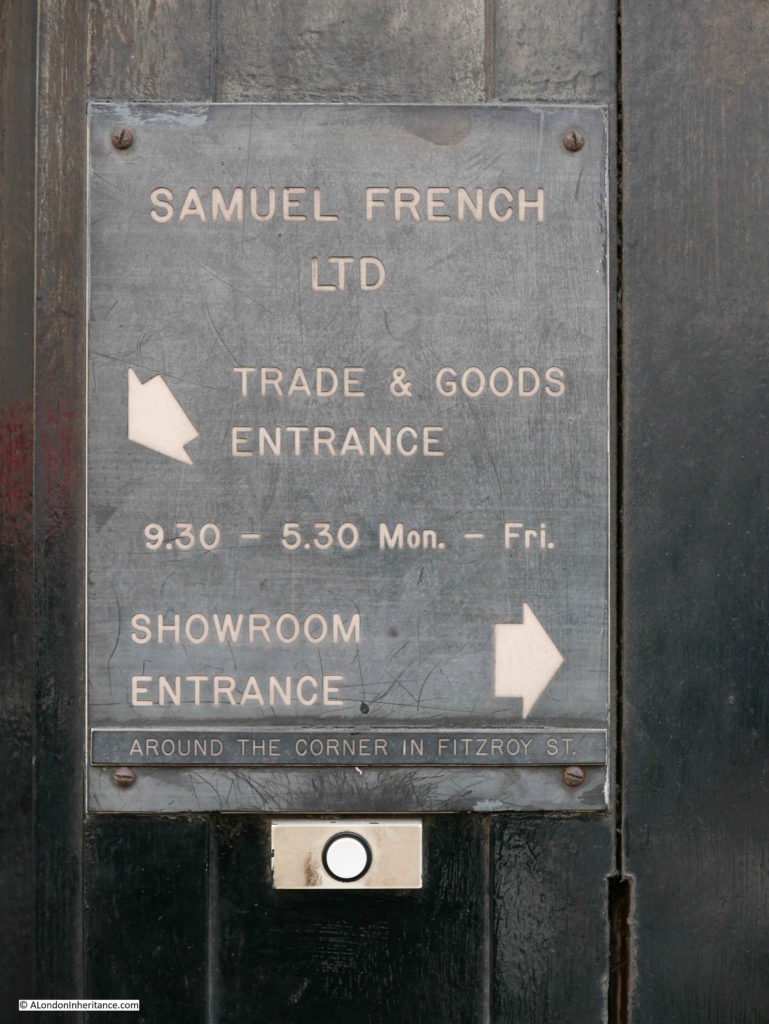

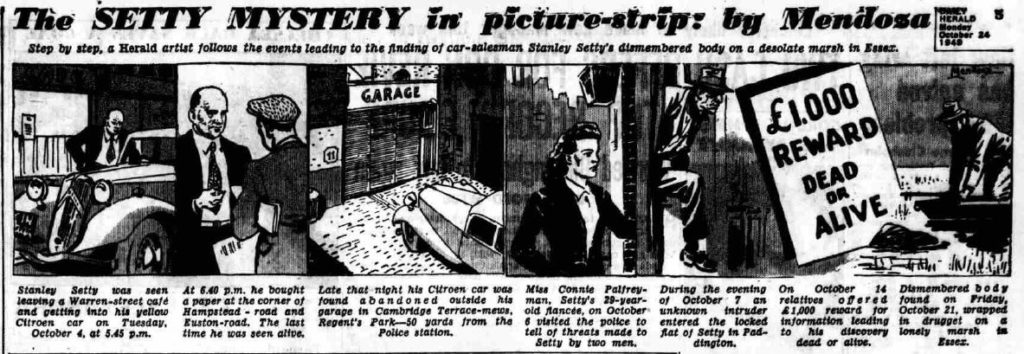


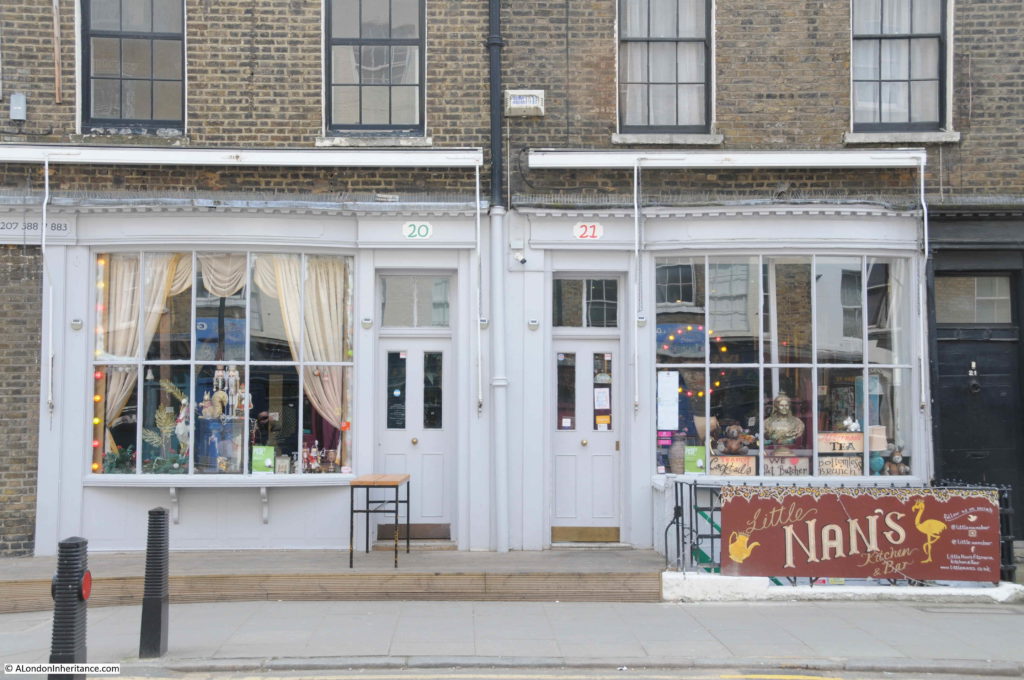

What a delight to read. I’ve always thought the quiet streets behind the station were full of richness and oddity.
Thanks for yet another fascinating post. I know the street well from many years of using it as an alternative to Oxford Circus tube. A more pleasant back way to Broadcasting House across the lovely Fitzroy Square – have you ever posted about the latter? Full of blue plaques and interesting buildings.
Happy Easter!
Thanks Tessa, Yes, Fitzroy Square is on the list. I walked around the square after Warren Street and it is a wonderful square, and one of the few places you can hear bird song in central London.
I worked in Fitzroy Square for a couple of years. Although the gardens are private (and where I was working we had our own key) they do open to the public on weekday lunchtimes during the summer.
Thanks for another fascinating post.
I know the area fairly well having worked in and around Warren Street for many years.
I did hear the reason it became popular with second hand car dealers was continuation of use. In 18th and 19th century the Street was popular with carriage makers and repairers. Workshops would’ve been housed in the many Mews and wide passages in the area.
Also on the corner of Grafton Mews and Warren Street there was an excellent French Cafe called Rive Gauche, run by my dear friend Guy and his family for over 35 years. A very wiry and enthusiastic Frenchman he sadly had to close in 2016 due to rent and rate increases. Thanks again for the post.
Rive Gauche did the most superb sandwiches. Cherry tomatoes used when they could have passed us off with usual pappy stuff!
I had my breakfast at The Dairy last year when i was staying nearby. The tiles inside are superb. I can send you a photo if you like. But what I noticed particularly was how well the 1930s metal window frames blended in with the exterior.
I went to UCL back in the day and know this area so well and found this even more interesting. Thanks.
A lovely walk this morning, through a very familiar neighbourhood. Thanks from the west coast of Canada.
Thank you for another really interesting read. Especially interested in the existence of a shop for Sculptors in central London. Wonderful.
Thank you for sharing, I was born In Goodge place, both my parents also lived and went to school in the area. This was like a walk down memory lane, remembering my parents and grandparents. It all looks very much the same, the dairy in particular, I shopped with my grandmother.
Thanks for this – a wonderful post (as usual).
I took some photos of the Evans shop, in the early 00s, when it was boarded up. Must admit I thought it was probably doomed back then – very pleased to have been proved wrong. Others whose photos I took around the same time did not survive, including Portwine’s butchers in Earlham St and the Tea Rooms in Museum St. Neither of these was as interesting as Evans, but both had character it was a pity to lose.
I grew up in Conway Street,1953-63 and knew Miss Evans from the dairy.Used to love watching her slice ham with one of those big stainless steel slicers. She used to deliver milk in the area using her black Morris Minor. I watched the Post Office Tower being built,which was very exciting as it looked so “space age”. I remember the street lights were gas,and the man coming around at dusk to light them! Probably only one or two cars in the street. We also had the onion man selling from his bicycle,and the knife sharpeners barrow with a big whetstone on it. We had no hot water,just a sink on a landing,and shared the toilet on the ground floor with another family. Cut up newspaper on a hook for toilet paper! A big tin bath in front of the fire for bath nights topped up with a kettle! When I tell people I’m from the West End,they assume we were well off. We had far less amenities than people living on council estates in the East End! It’s changed completely now,with houses costing millions. Also I remember Fitzroy Square gardens being open to the public,not locked up.
I and my family lived in 7 Fitzroy Square where I was employed as caretaker at the beginning of the 1970s. We were in that corner shop almost daily, and have fond memories of the proprietress, Miss Evans, a little Welsh lady. Every Saturday she would say to me “I have saved you six brown eggs!” in her lovely lilting accent. As I write this my daughter, who was a ten-year old at the time, has just told me she loved little yoghurts from the Dairy……
My Mother tells me I’m mistaken about the gardens being open to the public. Access was only freely available when the gardens were excavated for the construction of the Victoria Line around 1969/70.
I can only comment on how it was when I lived in the square, but at that time the garden was not open to the public. Each resident had a key to the gate. But it was somewhat public one Saturday night with sounds of laughter. On looking out the window I saw a group of lads from the Toc H men’s accommodation in the square carrying another chap who appeared unconscious and, with some difficulty, transporting him across the fence into the garden, There they laid him in a bed which they had smuggled into the garden earlier. It transpired he was about to be married, and this was the culmination of his stag party! God knows what the poor fellow must have thought when he eventually woke up!
I read somewhere that Number 7 Fitzroy Square has been sold several times since we left, the latest sale realising the sum of £6 million…..
Hi Chris, do you remember the name of the newsagent shop in Warren Street? I was the happy winner of a raffle prize there in 1971…a huge box of chocolates!
I think it was called Martins,though at that time the Martins had sold up to the Taverners who may have left the old name up.
The shop along form Evans was Harry’s news paper & tobacconist.. I grew up in Conway Street. 1958-1970.
I stand corrected. I lived at No.16 1953-63,so you’d have been too young for me to have known you. What number did you live at?
Yes, “Harry’s” rings a bell. Thank you…..
Warren St is not so quiet during normal business hours – certainly not at the TCR end. The snack and lunch bars such as Pret A Manger are packed.
I occasionally went to the Smugglers pub in Warren Street at lunchtime. Their roast beef sandwiches were to die for!
As always so interesting and a pleasure to walk down memory lane with you
Another must visit part of London on my list,some great memories supplied by subsribers.
I always find the process of relating current cityscapes to old maps fascinating – probably one reason I started my working life as a geography teacher! Always read each blog and I appreciate the time, effort and skill that goes into them. Thank you.
Yet another most interesting and fascinating read. My late father worked for Maples the upmarket furniture store sited on Tottenham Court Road in the 70’s.
What a great read! So interesting and informative. I have spent many hours in the past reading plays in Frenches, looking for suitable plays to direct in our little theatre in Newbury. I love to learn about the history of the streets in our great capital.
if I m not mistaken, I found you through a Moment Twitter’s post, and is the best find in quiet a while… I arrived in London in 89, and oh…how I wish I had taken many more photos of the areas I lived… I have to say that, as much as I love the easy access to information the net gives, the wonderful thing that mobiles phones can be and many more aspects of progress… I also get a bit depressed by the lack of local shops, the modern architecture doesn’t much appeal to me, the proliferation of non personal coffee shops depresses me even more… anyway, thanks for the post. I have been most of my life in London around the Camden Borough, Great Portland St, Warren St and Tottenham Court Road, the Regents Park area are special to me, I enjoyed this post so much! thanks for sharing!
I mentioned this post in the New Statesman this week
https://www.newstatesman.com/politics/uk/2019/05/linda-grant-s-diary-best-brexit-movie-washing-machine-nightmares-and-question
Only it was a shared sink with a cold tap on the landing,not a cooker!
Bugger, my apologies.
When I worked in Albany St in the 80s I used to call in at Evans corner shop for breakfast supplies – The owners were very old but delightfully polite and you could order items they they didn’t have in stock – such a shame it closed and turned into another generic coffee shop
Thank you this is so interesting. I will visit with my daughter, it’s really helpful to have this as a guide.
I’m commenting some years after the article was posted but yet another fascinating read on this blog. I used Warren Street most lunchtimes in the early to mid nineties on my walk from work overlooking the Euston Underpass to get lunch in Oxford Street, preferring the quieter roads through Fitzrovia and also frequented Tiranti’s regularly. It would have been interesting to have known some of the history mentioned above at that time. I now feel the need to re-trace my steps and look at my surroundings with fresh eyes. A belated thanks for the, as always, interesting post.
My great Auntie Helene Linncon worked in Evans Dairy , I believe that is her in your photograph, its been many years since shes passed away .. i would go and visit her all the time late 70s- 80s, and Ms Evans, she would often give me a lift home in her pristine black Morris minor, it was really gorgeous.. They were truly lovely lady’s, it was a nice shop too, i’d always be given animal crackers, off the shelve which i loved , i still remember , going through the shop into a dining room, it had a massive wooden dining table, grand father clock, 2 tall armchairs, somewhere to make tea and Ms Evans china ,which i was terrified of breaking .. huge set of stairs that went up a couple of floors, i would run up and down as a kid.. a regular in the shop was Kennith Williams he lived close by in Farley Court i met him on a few occasions before he passed away .. he used to come in and gossip away to my auntie for ages .. lovely man
I recently visited Evans the dairy shop, now a cafe. My friend lived in Warren Street. The then owner was proposing to remove the signage and a lot more, prepared to face the consequences. MY friend led vehement opposition. I wish she was alive today to see that it still proudly stands. She told me that Evans once had cattle grazing on the now Euston Road.